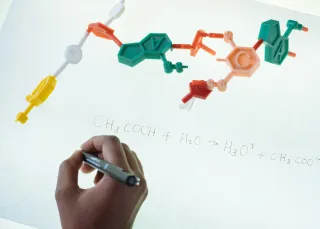Active banners: 0 Visible banners: 0
How Do Some Algae Make the Earth Warmer?
Provided by: Science Journal for Kids |Published on: January 5, 2023
Videos
6-AP
Synopsis
- This lesson has students read a simplified scientific paper that details research about algae that also produce nitrous oxide, a greenhouse gas.
- Students read the paper, answer comprehension questions, and watch a video to learn about the effects of increased nitrogen in aquatic environments and on the climate.

Subjects: Chemistry, Biology, English Language Arts
Authors: Science Journal for Kids
Region: Global
Languages: English
Teaching Materials
Positives
- Walking students through the background information, methodology, and conclusions, the article allows them to practice and prepare for reading actual academic papers.
- This lesson is a great way for students to see how the scientific method is applied in research.
- The resource includes additional lesson plans, related articles, and a glossary of key terms.
Additional Prerequisites
- Students should have a basic understanding of biology and chemistry.
- Aside from the video, this lesson can be completed offline by printing the article.
Differentiation
- The article is available in both upper and lower reading levels. The article for lower reading levels may be best for younger students and students unfamiliar with basic biology and chemistry.
- It may be helpful for some students to use the audio version of the article (the first video).
- Some terms like genetic, microbes, and ecosystems may need to be defined for younger students before or after watching the video.
- Ecology classes can use this paper to connect to topics such as eutrophication and the nitrogen cycle.
- For similar resources, see this lesson on preparing for droughts and this lesson on how whales are affected by climate change.
Scientist Notes
Teaching Tips
Standards
Resource Type and Format
About the Partner Provider

Science Journal for Kids
Hundreds of scientific articles. Written for kids. Approved by scientists. Free.
All resources can be used for your educational purposes with proper attribution to the content provider.
Teaching Materials
Educator Support
My Account







